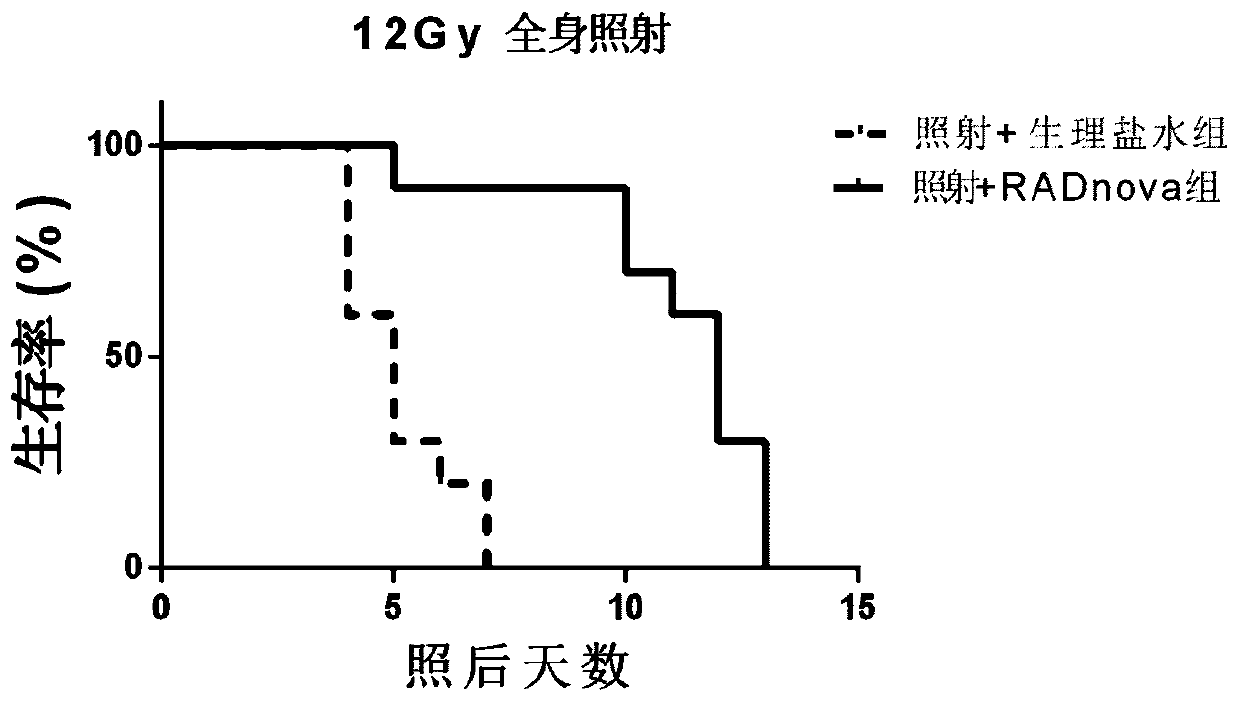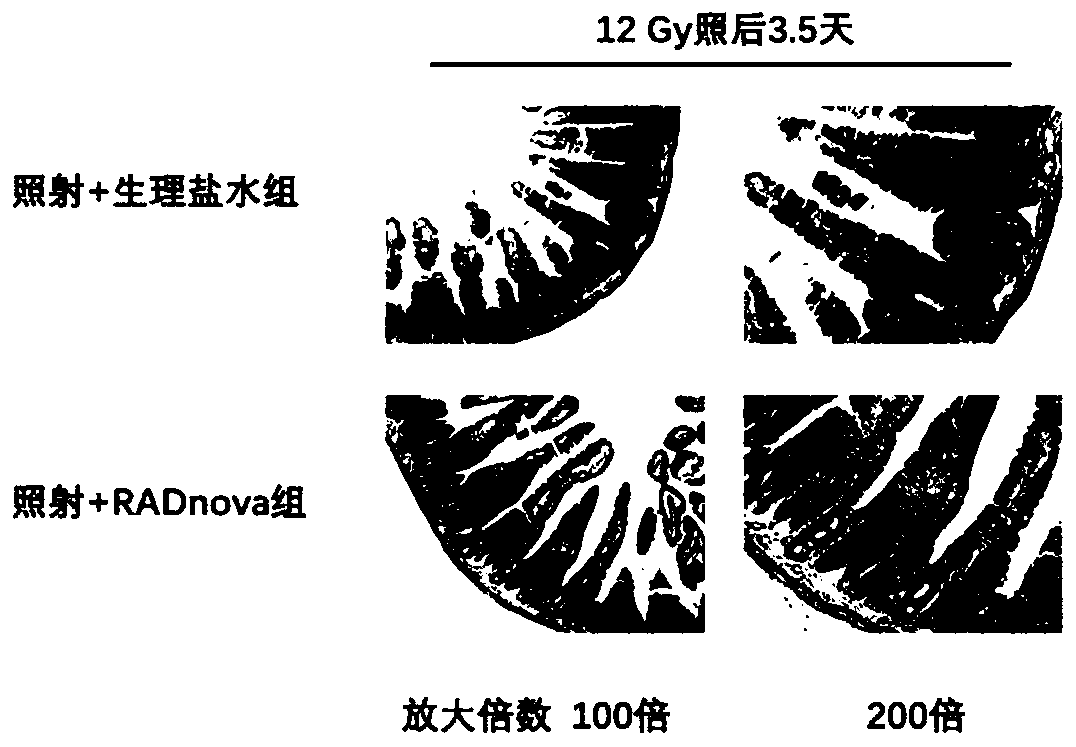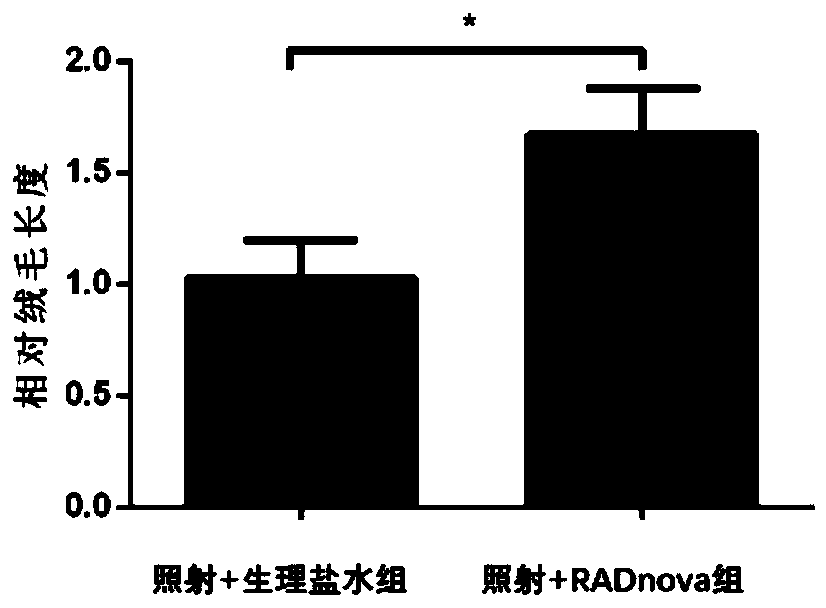Application of compound in RADNOVA anti-radiation treatment
A compound and anti-radiation technology, applied in the field of biomedicine, to achieve outstanding effects on bone marrow hematopoietic system damage
- Summary
- Abstract
- Description
- Claims
- Application Information
AI Technical Summary
Problems solved by technology
Method used
Image
Examples
preparation example
[0031] Add o-benzoylsulfonimide (5g, 27.3mmol) into a 100mL round-bottomed flask, add thionyl chloride (10mL) at room temperature, and then add anhydrous DMF (0.1mL) dropwise under stirring . The system was heated to 80°C and reacted for 2 hours. After the reaction was completed, the reaction system was directly evaporated to dryness to obtain 6 g of a colorless and transparent paste crude product (Compound 1), which could be directly used in the next reaction without further purification.
[0032] The crude product of compound 1 (6g) was added in a 100mL round bottom flask, followed by sequential addition of 1,4-dioxane (15mL), triethylamine (8g, 82mmol), 3,5-bis(trifluoromethane base) aniline (6.3 g, 27.3 mmol). The reaction system was heated to 30° C. for 1 hour. After the reaction was completed, the reaction system was directly evaporated to dryness. The solid product was washed with water (30mL*3) and methanol (10mL*3) respectively, finally filtered and dried to obtai...
experiment example 1
[0035] Mice: Male wild-type C57 mice (6-8 weeks) were purchased from Chinese Academy of Sciences (Shanghai). All mice were bred in the Special Pathogen Free (SPF) laboratory of Animal Experiment Center of Second Military Medical University (Shanghai). The mice were randomly divided into 2 groups (irradiation + normal saline group and irradiation + RADNOVA group), with 10 mice in each group, and the mice in the RADNOVA group were injected intraperitoneally 24 hours before irradiation and 2 hours before irradiation. 2.0mg / piece / time. The normal saline group was given the same dose of normal saline as a control.
[0036] Whole-body irradiation with 12Gy γ-rays was given to the mice, all the mice in the saline group died within 7 days, and the average survival time of the mice in the RADNOVA administration group was significantly prolonged. Experimental results such as figure 1 shown.
[0037] RADNOVA can improve the damage of intestinal tissue in mice after 12Gy γ-ray whole b...
experiment example 2
[0039] Mice: Male wild-type C57 mice (6-8 weeks) were purchased from Chinese Academy of Sciences (Shanghai). All mice were bred in the Special Pathogen Free (SPF) laboratory of Animal Experiment Center of Second Military Medical University (Shanghai). The mice were randomly divided into 2 groups (irradiation + normal saline group and irradiation + RADNOVA group), with 10 mice in each group, and the mice in the RADNOVA group were injected intraperitoneally 24 hours before irradiation and 2 hours before irradiation. 2.0mg / piece / time. The normal saline group was given the same dose of normal saline as a control.
[0040] Whole-body irradiation with 8.5Gy gamma rays was given to the mice, all the mice in the saline group died within 10 days, and the 30-day survival rate of the mice in the RADNOVA administration group was 100%. Experimental results such as Figure 4 shown. It can be seen that RADNOVA has an unusually obvious protective effect on lower doses of radiation (8.5Gy ...
PUM
 Login to View More
Login to View More Abstract
Description
Claims
Application Information
 Login to View More
Login to View More - R&D
- Intellectual Property
- Life Sciences
- Materials
- Tech Scout
- Unparalleled Data Quality
- Higher Quality Content
- 60% Fewer Hallucinations
Browse by: Latest US Patents, China's latest patents, Technical Efficacy Thesaurus, Application Domain, Technology Topic, Popular Technical Reports.
© 2025 PatSnap. All rights reserved.Legal|Privacy policy|Modern Slavery Act Transparency Statement|Sitemap|About US| Contact US: help@patsnap.com



